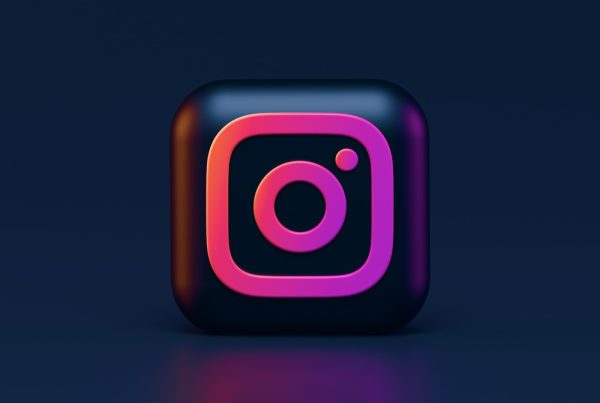
A well-designed brochure can be a powerful marketing tool for any business or organisation. But what exactly makes a good brochure design?
With so many design options and considerations, it can be overwhelming to know where to start.
In this comprehensive guide, we’ll explore the key elements that make up a successful brochure design, from choosing the right colours and fonts to creating an effective layout and messaging strategy.
We’ll also cover important considerations such as target audience and distribution channels, as well as how to incorporate branding and imagery into your design.
Whether you’re a seasoned designer or just starting out, this guide will provide you with the knowledge and tools you need to create a brochure that captures attention, communicates your message, and ultimately drives results.
So, let’s dive in and discover what it takes to create a truly effective brochure design.
Importance of Brochure Design
Brochures are an essential part of marketing. They are tangible, portable, and can be distributed in a variety of ways, making them an excellent option for businesses looking to reach out to potential customers. A well-designed brochure can communicate a company’s message and showcase its products and services in a visually appealing way.
A good brochure design should be eye-catching, informative, and easy to read. It should also be consistent with the company’s branding and messaging. A poorly designed brochure, on the other hand, can be confusing, unprofessional, and may fail to engage the intended audience.

Elements of a Good Brochure Design
Choosing the Right Colour Scheme
Choosing the right colour scheme for a brochure design is crucial. The colours used can evoke emotions and set the tone for the entire brochure. For example, warm colours like reds and oranges can create a sense of excitement and urgency, while cool colours like blues and greens can create a sense of calm and relaxation.
When selecting colours for a brochure, it’s essential to consider the target audience. For example, a brochure aimed at children may use bright, bold colours, while a brochure aimed at professionals may use more subdued, sophisticated colours.
Typography and Font Selection
Typography is another critical element of brochure design. The font used should be legible and easy to read, even at a small size. Sans-serif fonts like Arial or Helvetica are often used for headlines and subheadings, while serif fonts like Times New Roman or Georgia are used for body text.
When choosing fonts, it’s important to consider the overall tone and style of the brochure. For example, a modern, edgy brochure may use a sans-serif font, while a more traditional brochure may use a serif font.
Images and Graphics for Brochure Design
Images and graphics can help to bring a brochure to life and make it more visually appealing. It’s important to choose high-quality images that are relevant to the company and the message being conveyed. The images should also be appropriately sized and positioned within the brochure.
Graphics can also be used to enhance the design of a brochure. Icons and illustrations can be used to break up text and add visual interest. Infographics can also be used to communicate complex information in a more accessible way.
Layout and Composition of a Brochure
The layout and composition of a brochure are essential to its success. A well-designed layout can help to guide the reader’s eye and make the brochure more engaging. The composition should be balanced, with an appropriate amount of white space, and a clear hierarchy of information.
It’s also important to consider the folding and binding of the brochure when designing the layout. The most common types of brochure folds are bi-fold, tri-fold, and gatefold. Each type of fold has its own advantages and disadvantages, and the choice should be based on the message being conveyed and the target audience.
Printing and Paper Options
Finally, it’s essential to consider the printing and paper options when designing a brochure. The paper used can affect the overall look and feel of the brochure. Glossy paper can create a more polished, professional look, while matte paper can create a more subdued, elegant look.
When choosing a printing option, it’s important to consider the quantity, quality, and cost. Digital printing is suitable for small print runs, while offset printing is better for larger print runs. The choice should be based on the budget and the intended use of the brochure.
Examples of Successful Brochure Designs
There are many examples of successful brochure designs that can serve as inspiration.
One example is the brochure for the Apple iPhone, which uses a minimalist design with high-quality images and simple, clear text.
Another example is the brochure for the Tesla Model S, which uses a clean, modern design with bold graphics and elegant typography.
When reviewing successful brochure designs, it’s important to consider the target audience and the message being conveyed. The design should be consistent with the company’s branding and messaging and should be visually appealing and easy to read.
Common Mistakes to Avoid in Brochure Design
One mistake is using too much text and not enough images or graphics. A brochure should be visually appealing and easy to read, and too much text can be overwhelming and off-putting.
Another mistake is using inconsistent branding or messaging. A brochure should be consistent with the company’s branding and messaging, and any inconsistencies can be confusing and unprofessional.
Finally, it’s important to avoid using low-quality images or poor typography. These elements can make the brochure look cheap and unprofessional and can detract from the overall message.

Brochure Design with DesignQ
DesignQ is your premier destination for top-notch design services. As a leading design agency specialising in graphic design, website design, and branding, we are dedicated to helping you achieve great results.
At DesignQ, we believe in the power of collaboration. Our team of expert designers works closely with you to gain a deep understanding of your unique needs and aspirations.
By forging this partnership, we can create brochures that not only meet but exceed your goals. DesignQ possesses the skills and expertise to bring your vision to life.
Contact us today to discover how DesignQ can help with your brochure design. Rest assured that when you choose DesignQ, you’re selecting a leading design agency. Let us show you the possibilities and embark on a journey of exceptional design together.
Conclusion
In conclusion, a good brochure design is essential for any business or organisation looking to market its products or services. The key elements of a successful brochure design include choosing the right colour scheme, typography, and images, creating an effective layout, and considering printing and paper options.
When designing a brochure, it’s essential to consider the target audience and the message being conveyed. The design should be consistent with the company’s branding and messaging and should be visually appealing and easy to read.
By following these guidelines, businesses can create brochures that capture attention, communicate their message, and ultimately drive results.









